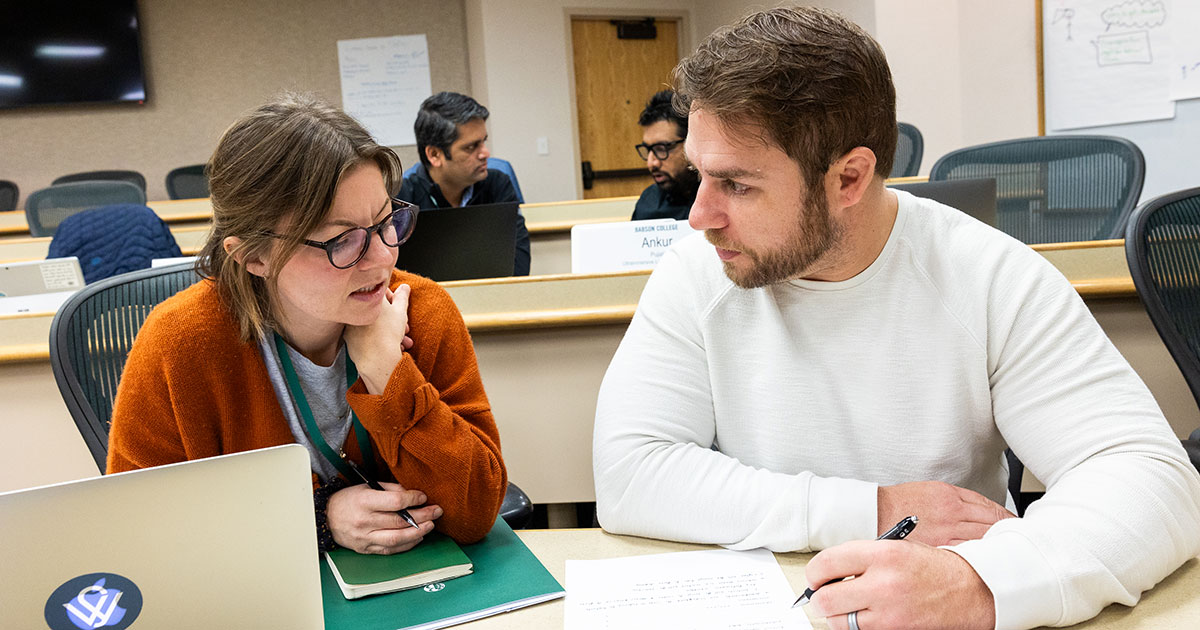Opportunity Focus: Corporate Suppliers
The most inspiring business idea goes exactly nowhere without customers, and for business-to-business (B2B) services, that means persuading someone to part with corporate money.
The dream of a small business owner is an anchor client, a corporate customer that provides steady sales. Cracking into the vendor universe of a large corporation can increase revenue an average of 250 percent, and propel the doubling of employees one year after the first sale. Whether a small business is selling software, supplying hydraulic components, or offering site security services, acquiring a client in the FORTUNE 1000 nearly guarantees growth and greater stability.
Surveys of small business owners show the problem with landing a corporate client is not making a sale, but connecting with the client in the first place. While policymakers have focused financial policy on behalf of small businesses, such as lowering tax rates and encouraging banks to issue credit, the fundamental issue of acquiring customers has been left to entrepreneurs themselves. (One exception: state and federal governments themselves are big customers of small business, both by statute and voluntary policy.)
In 2012, IBM began an initiative to connect small businesses to 15 big anchor clients (who collectively spend $300 billion a year on goods and services) via a Web portal called Supplier-Connection. Companies as diverse as Kellogg’s, Merck, Office Depot, Dell, and Citi agreed to a uniform bidding system for small business suppliers, located in a single Web presence. This collective approach also helps small businesses navigate the complexity of corporate procurement. Until recently, each large company had its own path to buying goods and services, and every sale began from scratch. Initiatives such as IBM’s make the process more efficient and thus affordable for smaller firms.
Kurt Peterson, president of Puritan Press of Hollis, N.H., landed a printing contract with IBM through Supplier Connection, noting, “We can bid for business at companies where in the past, we’d never get in the door.” The uniform bidding process offers exposure for small firms, and efficiency for buyers at large companies (who don’t have time to solicit bids from every possible vendor).
Babson Professor of Entrepreneurship Patricia Greene notes that interest-focused associations like the National Minority Supplier Development Council also provide a channel for small businesses to reach large clients, mostly through its local chapters. In 2010, the NMSDC claimed its corporate members procured $100 billion in goods and services from minority-owned firms.
After a large corporate client is secured, only a small percentage of small businesses go on to win business from another large firm, reflecting not only the difficulty of making a sale but of scaling capacity to serve more than one large client. Business owners who would accelerate their growth as a corporate supplier need a flexible plan for scaling capacity as well as a plan to share relationship management. The initial sales contact (typically the small business owner) should expect to stay involved with the client, reinforcing a high-touch relationship.
A qualifying small business owner can get started on the road to corporate supplier with these initiatives:
- Combine Web-based exchanges with grassroots marketing and networking to make initial contact.
- Leverage organizations that legitimize and/or confirm the quality of your work.
- Take advantage of corporate citizen initiatives and private/public partnerships. Many large firms include buy-local initiatives to burnish their brand.
- Use local networking organizations such as Business Networking International to reach individuals in larger corporations.
- Join industry purchasing consortia such as the Chicago region’s Buying Better and Boston’s Consortium for Higher Education to achieve advantages of scale.
- Take advantage of state, local, and federal government programs and set-asides. You’ll find a guide to selling to the U.S. Government here.
Posted in Entrepreneurial Leadership






